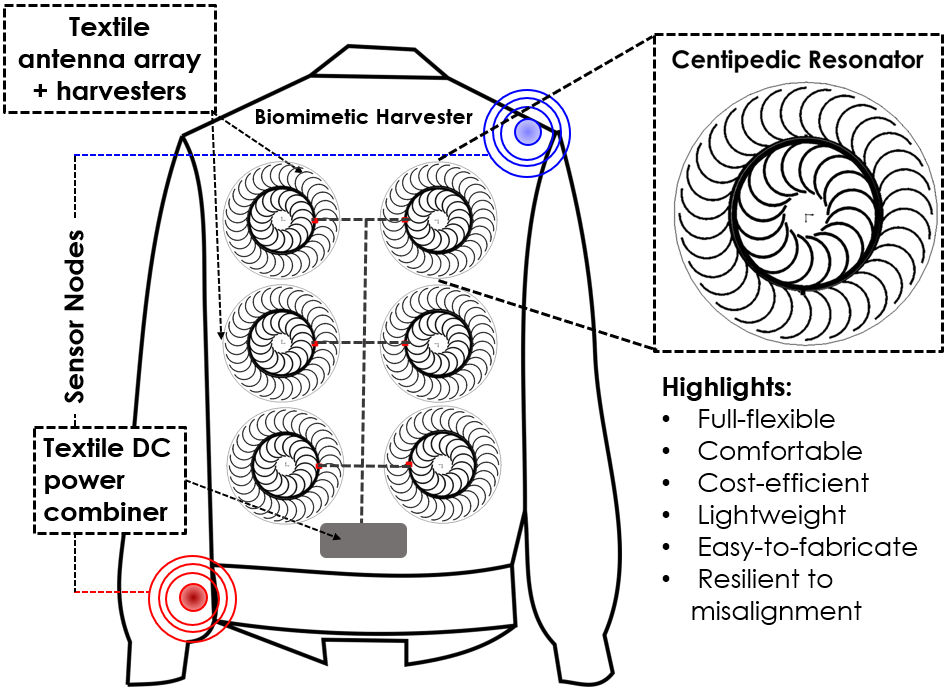Paper on wireless charging antenna wins Vital second place prize
Paper on wireless charging antenna wins second place prize

Dieff Vital, a faculty postdoctoral associate through the university’s Bridge to the Faculty program, ranked second in the IEEE RFID-TA 2022 best paper competition for his design of an antenna for a more efficient wireless charger that can be integrated into clothing for use in medical applications. These wearables free up a patient to move about while still being monitored by a medical device.
However, a misalignment can occur between the antenna sending power and the receiving antenna when the person wearing the item moves about, making it difficult to send good power. Different techniques have been used to mitigate the effects of misalignment on the transfer of power, but Vital proposed a novel solution based on an insect: a centipede.
Vital was inspired after watching centipedes crawl around and applied their movements and the tricks they use to attack their prey and applied them to the design of a biomimetic antenna for a textile wireless charger.
Centipedes lasso their prey, which includes roaches, moths, flies, silverfish, and termites, by jumping on them, then wrapping their legs around their catch. While coiled around their meal, they use their two right legs to inject venom. They also use this technique to protect themselves from predators, curling into a ball and releasing a chemical to repel attackers.
He structured magnetic and electric fields in his charger into a similar centipedal configuration, which allows for a cluster of strong magnetic/electric fields in the vicinity of the antenna. These fringe fields, or peripheral magnetic fields outside of the magnet core that are created by the semi-circles strengthen the electric and magnetic field and mitigate the effects of misalignment, increasing the wireless power transfer efficiency.
“If we change the alignment between the antennas during wireless power transfer, we will still be able to receive strong power levels,” Vital said. “This works as if the signals move around until they find the right path.”
The internet of things-connected antenna allows for wireless power transfer, energy harvesting, and sensor charging.
His proposed antenna was compared against state-of-the-art textile antennas and performed as well or better than them. His design consists of conductive threads embroidered onto fabrics, making the antenna fully flexible, low cost, bio-compatible, and low-profile, which makes it appealing for smart bandages and charging solutions for sweat sensors and temperature sensors, for example. This novel wireless charger is currently protected under a provisional patent.
The second-place prize for Vital’s paper, “A Biomimetic Resonator for Fabric-Based Wireless Power Transfer, Harvesting, and Charging of Sensors and Internet of Medical Things,” was awarded at the IEEE RFID-TA 2022 conference held this September in Cagliari, Italy.